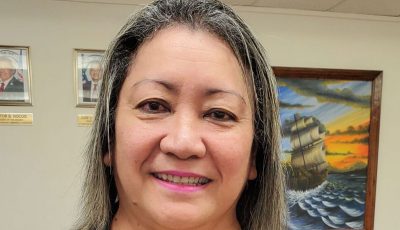CUC: No need to be alarmed about health advisory
The Commonwealth Utilities Corp. assured yesterday that the public has no need to be alarmed about a recent health advisory about its water, saying that exposure to the concerned chemical “over a lifetime” is the important element of it.
The CUC advisory on Tuesday stated that water samples from the Isley Booster station near the Saipan International Airport were found to contain a certain chemical, Perfluorooctane sulfonate or PFOS, at a concentration of 120 parts per trillion, exceeding the health advisory limit of 70 parts per trillion. PFOS is a chemical found in firefighting foam.
The affected areas include the villages of Chalan Laulau, Iliying, Chalan Kiya, As Terlaje, Kannat Tabla, Fina Sisu, and parts of As Lito. The advisory stated that consumers should not drink tap water, cook with tap water or make ice for consumption with tap water.
According to CUC deputy executive director William Gilmore, “the thing the people need to understand about it is there’s no need to be alarmed. The effects start to manifest over a lifetime of exposure. This is not an immediate concern, cause, or problem. The exposure over a lifetime is the important element of it.”
Gilmore said the proximate cause of the health advisory goes back several years to 2008. Back then, as part of the firefighting certification program, firefighting foam was used during practice and training at the airport. The foam used at that time included this chemical.
“So when it drains, it goes down into the soils and it’s only now that we are seeing the effects of it over time,” Gilmore said.
“The chemical PFOS is a unregulated chemical by the [Environmental Protection Agency], that’s why it’s a health advisory notice,” he said.
Gilmore stressed that CUC had been working hard to reduce the concentration of PFOS in the water around the affected areas.
“What we are trying to do is ameliorate the situation. There are solutions and we are applying them so we can capture the chemicals and remove it. We have removed the wells that are contaminated and have been identified as the source of the problem. It is an ongoing process where we go back and evaluate any of the other wells in the area to make sure we are not getting it from anywhere else.”
“We are already familiar with one solution that would rely on activated carbon that could potentially remove PFOS. We are always going to be looking to improve the system to protect the public. We would like to assure everyone that we are continuously looking for appropriate solutions and this entails a plans that will carry for the long term,” Gilmore said.
This comes at a time when CUC just came out with its 2016 water quality report.
“I stated that our water is safe and potable all over the island but it’s not necessarily palatable. Now we have this situation that have just developed and the timing was just not right. So I apologize to the public for that,” Gilmore said.



























